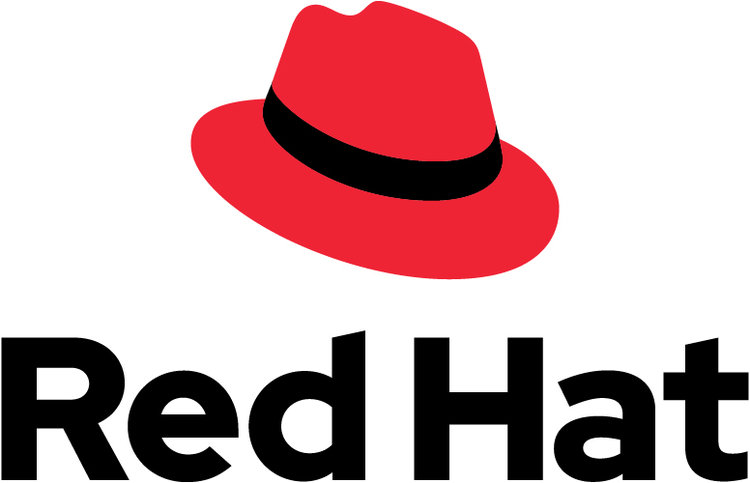In this Part 2 of a report on the IBM CEO Arvind Krishna’s Q&A session with analysts at the IBM Think conference two weeks ago, Krishna reveals his biggest challenges, describes how AI will change IBM’s consulting business, examines why he thinks IT buyers are nervous about deploying agents, looks at IBM’s acquisition strategy, and more.
In Part 1 he discussed AI innovation, workforce disruption, IBM’s bet on small models, and the need two manage to sets of workers, human and AI). As in Part 1, rather than repeat the analysts’ questions, we’ll just note the topics.
1 How Will AI Change IBM’s Consulting Business in 3 Years?
I think Mohammed and his leadership team have been quite explicit about this, and earlier, we have the discussion on digital workers combined with human workers. But for a long time, our IT services, has very much been called a p times q business, right? We have people based on their skills. They can demand a certain price, and if you can sell more work, you can get more total revenue, right? I’m sorry to be that dismissive of p times q [paradigm]. In the three-year time frame, you’re going to be charging not just for a human worker, but for your digital workers. The digital workers are not going to cost the same as a human worker, but if you have 10 times as many, maybe in aggregate, they do cost much as the human workers.
So companies who become really, really good at saying, how do I get the work done in a much more productive way, using the mix and the mix will keep changing. It’ll go up every six months. This is going to be how consulting itself gets done. So if you’re unit revenue in terms of work done for human decreases, the only way you make that up is a little more total work. I believe that this is where a lot of current services companies are going to find themselves left in the cold. Two, I have a very strong belief that much like in other technologies, we want our consulting teams to embrace the best AI out there to do all this, but also leverage what we have, because in some sense, that’s more profit for them than their peers will be able to do, because they always will have to procure these technologies. So to me, this is a built-in advantage for our consulting team as we go forward.
2 What Guides IBM’s Acquisition Strategy
 I’m very, very clear about this. Any acquisition we do has to fit three criteria. Criteria number one, I don’t really want to form a new lane, meaning where we have to get credibility. I’m going to stick to the lanes we have, hybrid cloud, automation, AI are the lanes in software. In consulting, there’s a few more lanes because the partners have deep expertise, like a Salesforce, Amazon, Microsoft, parallel to our examples, where you’ve done acquisitions there, but then you’re more acquiring expertise than technology. On technology stick to the lanes we are in. That’s number one.
I’m very, very clear about this. Any acquisition we do has to fit three criteria. Criteria number one, I don’t really want to form a new lane, meaning where we have to get credibility. I’m going to stick to the lanes we have, hybrid cloud, automation, AI are the lanes in software. In consulting, there’s a few more lanes because the partners have deep expertise, like a Salesforce, Amazon, Microsoft, parallel to our examples, where you’ve done acquisitions there, but then you’re more acquiring expertise than technology. On technology stick to the lanes we are in. That’s number one.
Number two, the word synergy is deeply misunderstood. I define synergy exactly the way you did. Can I leverage this and everything else? Can I knit together where something that they came in with and something we have, because one plus one equals three. if I don’t have that, why are we a better acquirer than that company should remain standalone and be funded by a venture capitalist or an IPO? I really fundamentally believe we can only be a good owner if that synergy you describe is there, otherwise you’re just acquiring pure revenue, and you should be paying a whole market price for it.
Number three, it’s got to be financially accretive for us, but that includes the synergy by financially accretive, meaning it’s got to get to the models we’re on. The model we’re on is software companies, for us, very quickly, get to 20 to 30 points, not basis points, of operating margin. If it’s in consulting, it needs to get to about 15 points of operating margin, and it has to be able to return cash to our investors. So three criteria, they’re pretty inviolable, and all the ones you mentioned since Red Hat, every one of them, which one I described, 100%
3 IT Buyers are Scared of AI Agents
 I think your observation is right. Many people are scared, but the fear comes from a lot of different factors. I don’t think there’s only one. If there was one, that’s a simple fix; we can go re-educate the people and be done. There’s a small number who actually have no idea what an agent is, so they just got to sit down and understand what is this technology and trying to explain it to people in industry jargon. People kind of look at you, and you very quickly get lost. Two, some people are still hung up on hallucination, bias and all those things, because the associated word agent is more autonomy. They think, oh, my god, I gotta have to have all these agents and I don’t know where the guardrails are. There’s a third kind who’s worried about, well, are these agents going to actually become fully autonomous and go do things that we never intended them to do?
I think your observation is right. Many people are scared, but the fear comes from a lot of different factors. I don’t think there’s only one. If there was one, that’s a simple fix; we can go re-educate the people and be done. There’s a small number who actually have no idea what an agent is, so they just got to sit down and understand what is this technology and trying to explain it to people in industry jargon. People kind of look at you, and you very quickly get lost. Two, some people are still hung up on hallucination, bias and all those things, because the associated word agent is more autonomy. They think, oh, my god, I gotta have to have all these agents and I don’t know where the guardrails are. There’s a third kind who’s worried about, well, are these agents going to actually become fully autonomous and go do things that we never intended them to do?
So you’ve got to get through all these different hoops sometimes for these people. But I will tell you that the ones who’ve been deploying AI well for two or three years are probably going to embrace agents and go forward.
The advice I give people is the same advice I gave on stage. Can we begin with the areas that have less risk, meaning, let’s assume mistakes will happen. Can we live with those mistakes? If there is somebody calling an urgent care doctor because they have a life-or-death situation going on, maybe we don’t want to go there, even though I’ll tell you my general belief is the AI is going to be pretty good at the first order triage. But if it’s inside for employee care, if it’s inside for all kinds of functions that we need to run an enterprise, what’s the risk? The risk is that we have some extra cost.
4 What’s Your Biggest Challenge?
I have a long list of challenges. Why are we so concentrated in what I’ll call it the global 2000. I believe that a lot of capability we have to go way down. This last time I looked [there are] 6 million enterprises of any scale size in databases. How about going from 2000 down to 200,000 what are the things you need to do there? How consumable do the products have to get to be able to there? What do we have to do to be even more channel friendly? So I think there’s a lot of things to be done. That’s challenge number one.
Challenge number two. I think that right now, and I don’t put a value judgment on it, I think geopolitics globally is driving a bit more [desire for] sovereignty. I’ll use that word than anything else do. Can we make sure that we are good in that world, as opposed to every company wanting to do its own things? When we go and have conversations, actually, I find that we are, by and large, trusted people don’t mistrust us. And if that’s the case, how do we take advantage of that more fully in this fragmented world? Three, nobody’s immune from supply chain. So you got to just think about that a little bit in this day and age, and as trading blocks form, because that gets locked out of certain countries, so that’s just the beginning of the set of bodies.
My biggest focus would be on the first one, and I would say that we’ve made a lot of baby steps, [seek to] achieve a breakthrough on that one. I think that over some years, that’s a 20%-to-30% revenue unlock, if we can succeed on going much, much deeper into the market. Many people look at me and say, “Oh, it’s not an IBM’s DNA.” That’s actually just not true. It’s not been in our DNA for the last 20 years. But we are 140-year-old company. It was in the DNA for the first 95 years. I mean, if you look at it, when IBM sold the typewriter only. That was 60 years ago. It sold to individuals. The IBM PC, I mean, to give ourselves some credit, was aimed at individuals and small businesses, not just large businesses. Actually, IBM did not sell that many PCs to large businesses. It was more to people. So when the AS400, the I series today, was there, it was doing a lot of work that today is being done by as-a-service applications. So it was in the DNA, we got to kind of get back to it.
Link to Part 1, IBM CEO Arvind Krishna on the Good, Bad, and Ugly of AI


1 Comment
Your article helped me a lot, is there any more related content? Thanks! https://www.binance.com/ar/register?ref=V2H9AFPY